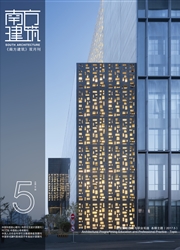

 中文摘要:
中文摘要:
真实性原则是文化遗产保护的关键,历史图像记录是建筑文化遗产保护、修复和研究工作中"真实性"的重要依据。从20世纪初开始,多位外国学者对中国进行了摄影记录,其中又以日本学者的记录最具系统性和代表性,开创了专业研究者对中国建筑摄影纪录的先河。这些庞大的摄影和研究成果资料群共同构成了中国最早的文化遗产图像数据库,真实地反映了20世纪初中国建筑遗产的状况,同时也是日本从明治末期开始的对亚洲国家遗产记录体系的重要组成部分。本文介绍了日本东洋建筑史研究回顾及为什么要进行历史图像的研究,日本对中国的建筑文化遗产研究概况和该研究的内容。
 英文摘要:
英文摘要:
As"authenticity" is essential to the cultural heritage conservation,historical photos are playing an important role in the practice and research of architectural heritage conservation.In the early 20th century,many foreign scholars came to China and took photographic images of the cultural relics.Among them,the Japanese scholars’ professional recording is the most systematic and representative.Based on extensive field work,these photos and research results constituted the earliest image database of Chinese cultural heritage and made accurate records about the Chinese modern architectural heritages.At the same time,they are the important evidence of recording Asian countries’ cultural heritages through advanced photography techniques by the Japanese from the late Meiji Age.This paper explores the reasons for the Japanese scholars to use historiography to research architectural history,explains the general Chinese architectural heritage research done by Japanese scholars,and the key contents of the researches.
 同期刊论文项目
同期刊论文项目
 同项目期刊论文
同项目期刊论文
 期刊信息
期刊信息
